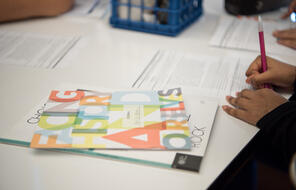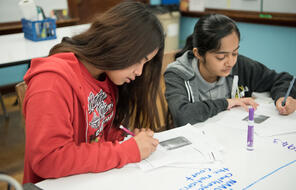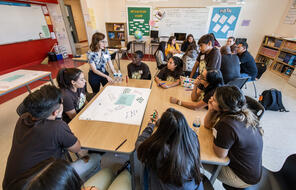Overview
Why Use a Word Wall?
The Word Wall teaching strategy creates a place in the classroom where students display the meanings of important ideas using words and pictures. As students encounter new vocabulary in a text or video, creating a classroom word wall offers one way to help them comprehend and interpret ideas in the text. It is also an effective way for students to keep track of new terms they’ve learned in a unit of study.
Vocabulary terms that you might add to your classroom word wall include bystander, perpetrator, genocide, democracy, tolerance, nationalism, and prejudice.
Procedure
How to Make a Word Wall
Variations on Classroom Word Walls
Unlimited Access to Learning. More Added Every Month.
Facing History & Ourselves is designed for educators who want to help students explore identity, think critically, grow emotionally, act ethically, and participate in civic life. It’s hard work, so we’ve developed some go-to professional learning opportunities to help you along the way.
Exploring ELA Text Selection with Julia Torres
On-Demand

Working for Justice, Equity and Civic Agency in Our Schools: A Conversation with Clint Smith
On-Demand

Centering Student Voices to Build Community and Agency
On-Demand















